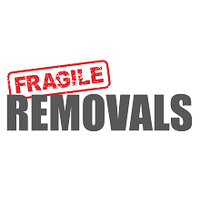
- Free ready (FOB)– the exporter takes care of business at the predefined area (and onboard the vessel). Expenses paid by the exporter incorporate burden, lash, get and stow the freight, including getting load not to move in the boat’s hold, shielding the payload from contact with the twofold base to forestall slipping, and assurance against harm from buildup. For instance, “Coxcomb JNPT” implies that the exporter gets it done for the Jawaharlal Nehru Port, India, and pays for the payload to be stacked and gotten on the boat. Removals Cambridge term likewise pronounces where the obligation of the transporter closes and that of the purchaser begins. The exporter will undoubtedly take care of business at his expense a lot. For this situation, the cargo and different costs for outbound traffic are borne by the shipper.
- Carriage and cargo (presently referred to in the US as “cost and cargo”) (C&F, CFR, CNF): Insurance is payable by the shipper, and the exporter pays all costs brought about in moving the payload from its place of beginning to the port/air terminal and sea cargo/airship cargo to the port/air terminal of objective. For instance, C&F Los Angeles (the exporter pays the sea dispatching/airship cargo expenses for Los Angeles). The vast majority of the legislatures request that their exporters exchange on these terms to advance their fares overall like India and China. A considerable lot of the transportation transporters (like UPS, DHL, FedEx) offer assurances on their conveyance times. These are known as GSR ensures or “ensured administration discounts”; if the bundles are not followed through on schedule, the client is qualified for a discount.
Natural impacts of transportation
The natural impacts of delivery incorporate air contamination, water contamination, acoustic, and oil contamination. Boats are answerable for in excess of 18% of some air contaminants. With respect to ozone-depleting substance emanations, the International Maritime Organization (IMO) gauges that carbon dioxide discharges from delivery were equivalent to 2.2% of the worldwide human-made outflows in 2012 and anticipates that they should rise 50 to 250 percent by 2050 if no move is made.
Albeit in the development of a given mass of freight a given distance, ships are the most energy-proficient technique, the sheer size of the oceanic vehicle industry implies that it significantly affects the climate. The yearly expanding measure of transportation overpowers gains in proficiency, for example, from slow-steaming. The development in ton-kilometers of ocean Removal company has found the middle value of 4% yearly since the 1990s, and it has developed by a factor of 5 since the 1970s. There are presently more than 100,000 vehicle ships adrift, of which around 6,000 are huge holder ships. The way that delivery appreciates significant expense advantages has added to the developing emanations.
Weight water
Weight water releases by boats can adversely affect the marine climate. Voyage ships, huge big haulers, and mass freight transporters utilize a tremendous measure of weight water, which is regularly taken on in the beachfront waters in a single district after ships release wastewater or dump payload, and released at the following port of call, any place more load is stacked. Counterbalance water release regularly contains an assortment of natural materials, including plants, creatures, infections, and microbes. These materials frequently incorporate non-local, disturbance, obtrusive, colorful species that can cause broad environmental and financial harm to amphibian biological systems alongside genuine human medical conditions.
